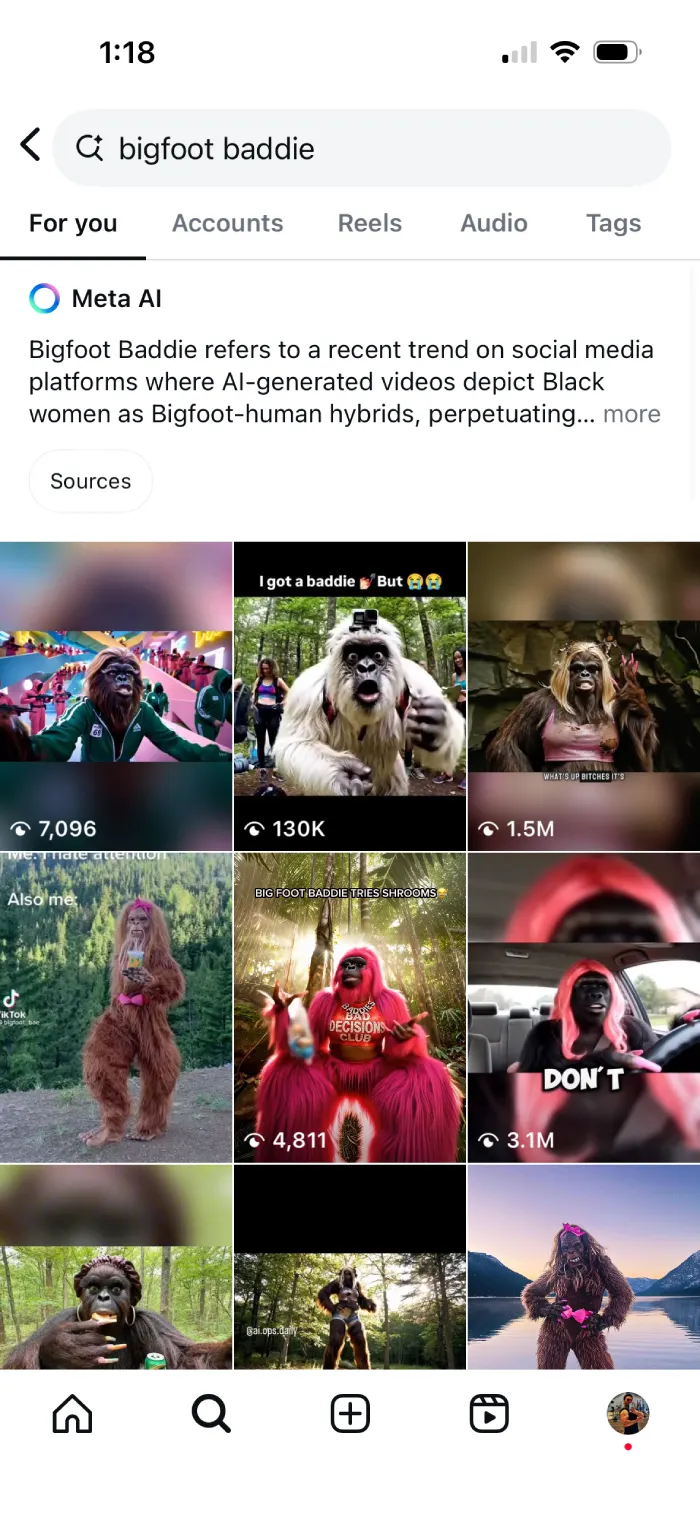The wait is over. @GeminiApp is now shipping Veo 3 *globally* for all Pro members!
— Josh Woodward (@joshwoodward) July 3, 2025
That means India, Indonesia, all of Europe, and more are starting to get access to create videos right now.
As a member, you'll get 3 video generations per day, and that credit will replenish… pic.twitter.com/uPa0p0KQZu
Reports say that Google’s newest AI video generator is being weaponized to create deeply offensive content that’s spreading rapidly across social media platforms. Two major investigations have revealed how users are exploiting Veo 3 to produce racist and antisemitic videos that rack up millions of views.
Millions of views for hateful content
Media Matters published a comprehensive report documenting the alarming trend of racist AI-generated videos on TikTok. The investigation found videos with clear Veo 3 watermarks gaining massive audiences, including clips depicting Black people as monkeys that have attracted over 4 million views. One particularly disturbing video showing a police officer targeting Black individuals has been viewed 14.2 million times.
The content spans multiple forms of hate speech. Videos perpetuate harmful stereotypes about Black Americans, including false narratives about absent fathers and criminal behavior. Other clips target Asian Americans, South Asian communities, and Jewish people with equally offensive stereotypes.
WIRED’s separate investigation focused on the “bigfoot baddie” phenomenon, where creators use Veo 3 to generate videos of primates speaking in exaggerated African American Vernacular English. These videos often show the AI-generated characters wearing bonnets and threatening violence. One Instagram account posting such content has accumulated over a million views on five videos in less than a month.
AI tool monetization and spread
WIRED discovered that some creators are monetizing their knowledge of generating racist content. One popular Instagram account links to a $15 online course teaching others how to create similar offensive videos using Veo 3. The course includes tutorials with titles like “Veo 3 does the heavy lifting.”
The algorithmic nature of social media platforms appears to be amplifying the problem. After viewing a few “bigfoot baddie” videos, Instagram’s recommendation algorithm began showing test accounts more racist AI-generated content, including videos of Black men depicted alongside chimpanzees.
Historical context and expert concerns
Nicol Turner Lee from the Brookings Institution told WIRED that these videos echo slavery-era illustrations designed to emphasize “primal characteristics” of Black people. She called the readily available racist imagery “both disgusting and disturbing.”
The ease of creating these videos represents a new challenge in content moderation. As we explored in our recent analysis of AI slop flooding social media, generative AI tools are making it simpler than ever to produce harmful content at scale. What’s even worse is the fact that Meta doesn’t seem to care. I looked up “bigfoot baddie” using the search function on Instagram and it popped up several videos, with hundreds of thousands of views. So instead of making it hard to discover, Meta is serving the videos on a silver platter. All that is topped with Meta’s own AI describing the trend.
Platform response and moderation challenges
TikTok’s community guidelines explicitly prohibit dehumanizing content based on race and ethnicity. However, the platform has struggled historically with containing hate speech and misleading AI-generated content. The current wave of Veo 3 videos appears to be spreading largely unchecked across multiple platforms.
This situation highlights ongoing issues with AI moderation systems that we previously highlighted just a couple of months ago. The way AI generation tools are advancing, they simply outpace platform safety measures. So it’s a cat-and-mouse game where AI tools are in the clear lead.
Furthermore, Google announced this week that Veo 3 is now available to Gemini Pro subscribers worldwide across 159 countries for $19.99 per month. The tool can generate 720p videos up to 8 seconds long with realistic audio and dialogue.
While Google and the social media platforms have been contacted for comment, none provided statements addressing the misuse of the technology. So it seems the future of social media is set to change forever. Expect racist AI-generated clips and other “brainrot” content clogging up your feed. The best users like us can do is report such videos or tap the ‘Not Interested’ button to train the algorithm to not show us such content.
That said, feel free to share your experience with AI-generated clips on social media, have you come across such racist clips while scrolling through your feed? Let us know in the comments below.
Featured image AI-generated
TechIssuesToday primarily focuses on publishing 'breaking' or 'exclusive' tech news. This means, we are usually the first news website on the whole Internet to highlight the topics we cover daily. So far, our stories have been picked up by many mainstream technology publications like The Verge, Macrumors, Forbes, etc. To know more, head here.



